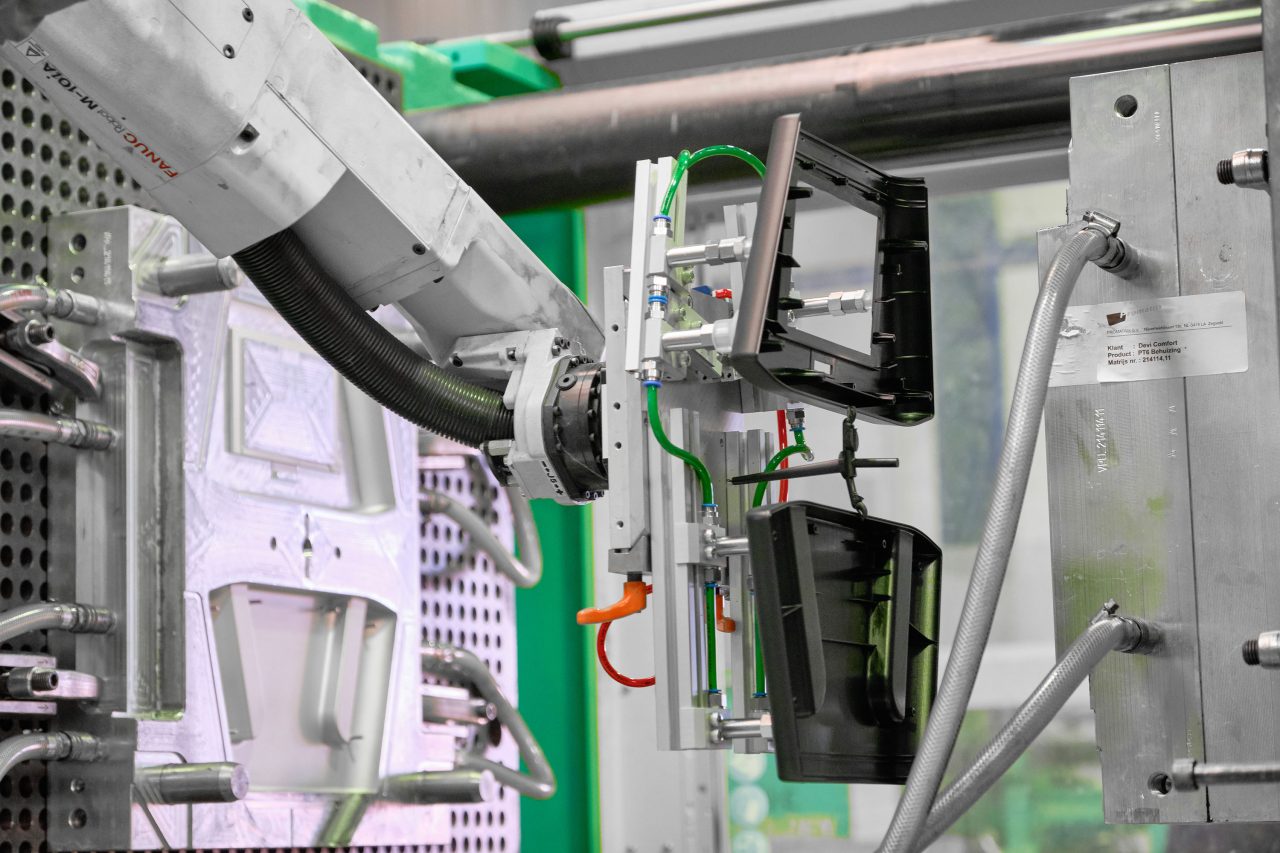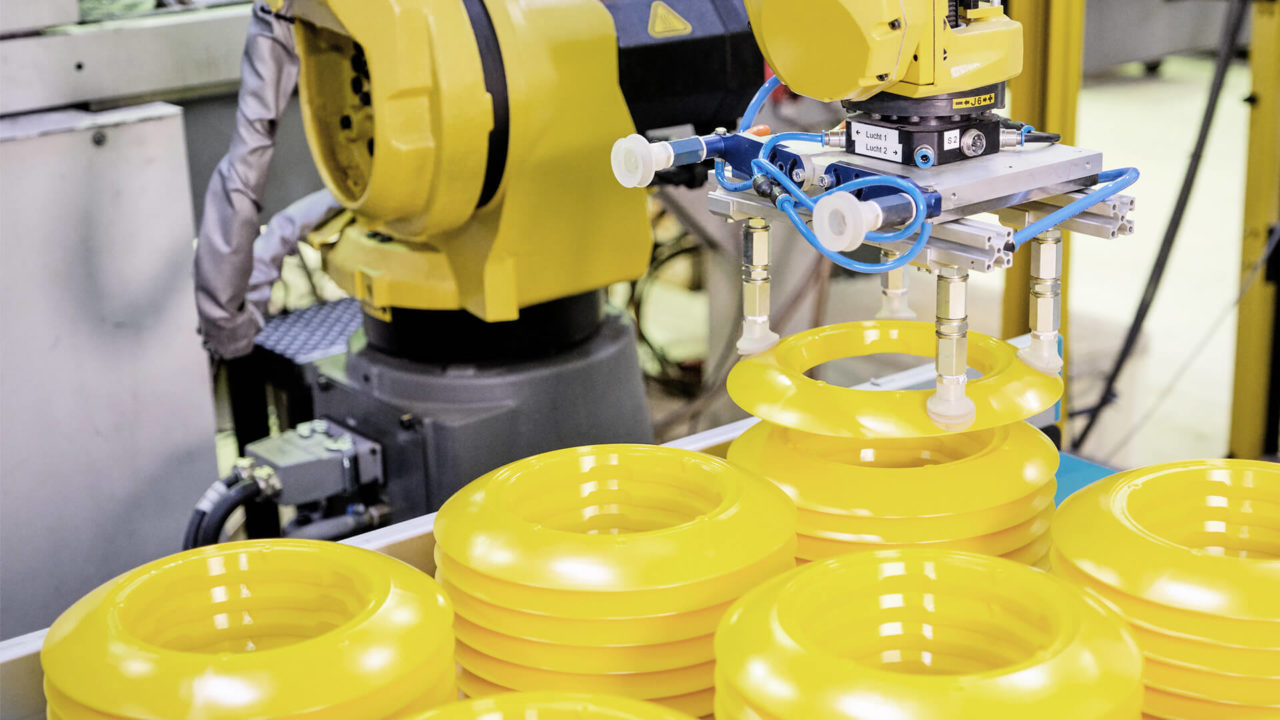Assembly and the possibilities at Promatrix
At Promatrix we offer a wide range of possibilities for assembling products. This way we can take care of our customers as much as possible. Curious about the possibilities? Read our latest blog.
Promatrix is making increasingly smarter use of automating injection molding processes.
There is an increasing use of automation in technology. Logical processes with clear rules that previously required a lot of human labour are being replaced by machines and robots. At Promatrix, we are also making smart use of automation. And naturally we’re keen to go one step further by looking into automating processes that are not immediately obvious. Albert Timmerarends and Michael, both Moulding Process Engineers at Promatrix, talk about this.
For two to three years now, standard processes at Promatrix – such as manually removing products from the machine – have been replaced by robotic arms that place the products on a conveyor belt. In addition, the sprue is usually cut off automatically for products that require it. “Injection moulding of plastic products is a continuous process,” Michael explains. “Varying times negatively affect this process. If you put a person behind the machine, you don’t have exactly the same pace. In injection moulding, it’s important to have the same cycle time and the same action every time. If you don’t, the quality of your product will vary. Automating this process therefore has a major positive impact on the product. It’s possible with any material and any shape.”
“Besides the quality, the pace also increases,” Albert adds. “On our 300 tonner, we recently had a product running where we did the first 10,000 pieces by hand. It took us two and a half weeks for 2,500 pieces. After writing a fairly simple robot program, we did the other 7,500 in one week. A week later, we had to do another 10,000 pieces of the same product. We immediately automated it and then production only took us four days. Automation allows the machine to continue to run unmanned, even in the evening and at night. This reduces the lead time and allows us to deliver our products to our customers much faster.”

“Automation becomes a good option when a customer orders more than a small series,” says Michael. “For a product with 30 or 50 pieces, devising and making the automation takes longer than the manual work it replaces. Plus some parts are more difficult to automate, such as the post-processing of products. How do you ensure that the robot always performs the same action? How do you guarantee that a hole is always drilled in the right place in your product? And how do you limit the tolerance in your work area? Accurate programs have to be designed for this. We’ll keep taking further steps with this in the coming year.”
“We are working with automation both for requests for new products and in the production of existing series,” says Albert. “When automating existing processes, the order comes via the manager of the injection moulding department. Then we go to the design office and discuss the gripper that needs to be made. The gripper is the specially designed head for the standard holder of the robot head and is different for each product and action. Once the wishes are clear, we build the gripper and the necessary robot program so that the robot can get to work.”

“For every new customer who purchases products with a minimum batch size of 5,000 pieces, for example, we are involved in thinking about automation from the start of the process. That way we can ensure an optimal mould design right from the start, making it easy to automate the injection moulding process. We immediately come up with a first version of the gripper. Then one of our draughtsmen is tasked with developing it in greater detail. The necessary parts are made by our milling department; our 3D printer is used or parts are ordered. After that, it’s up to our assembly team to assemble the gripper along with the customer’s moulds. Then the automation of the injection moulding process can start during the trial injection of the mould.”
Curious about how we can help you with the injection moulding of your plastic products? We are happy to put our accumulated knowledge and experience to work for you. Visit our website for more information or contact us via info@promatrix.nl.